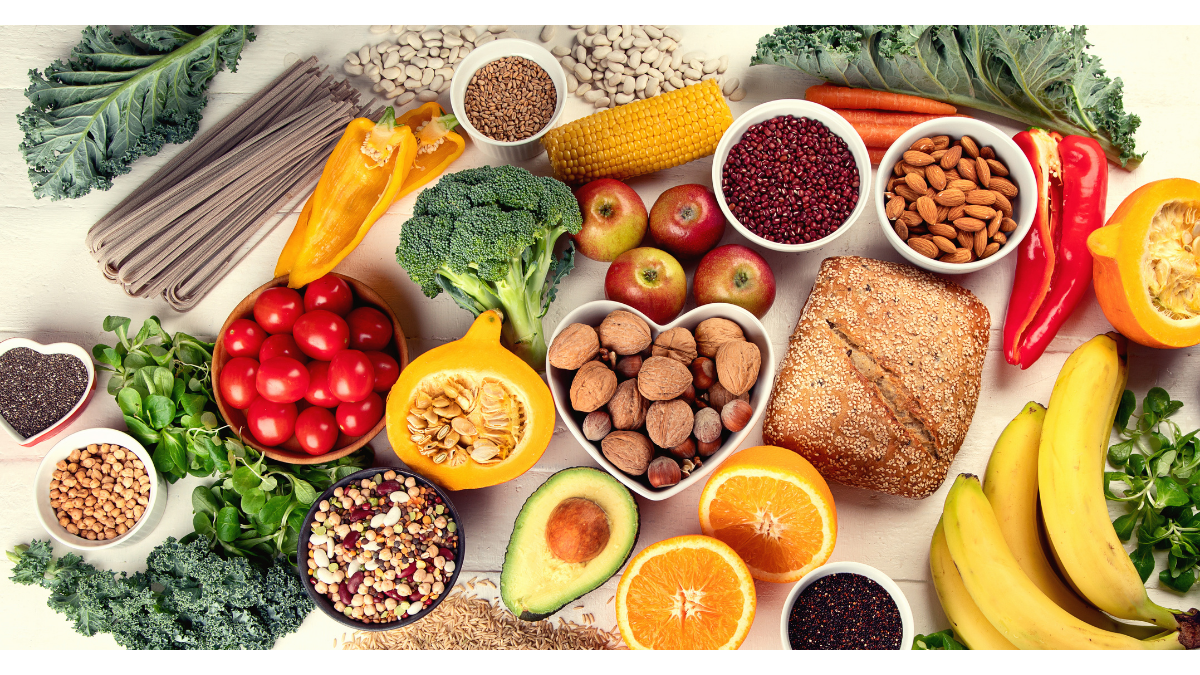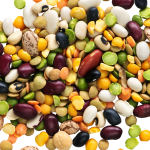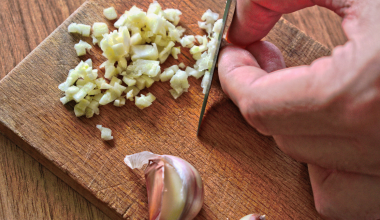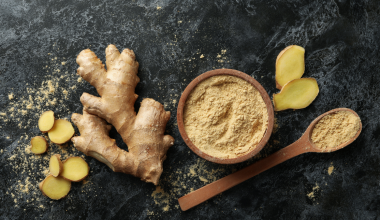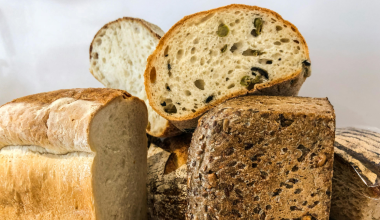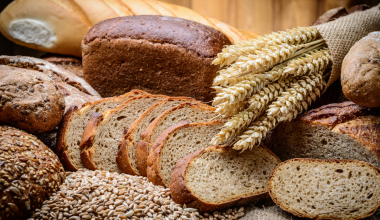When you buy through our links, we may earn a commission. Learn More.
TikTok’s #Fibremaxxing trend has millions of people excited about fibre, and that’s genuinely great news. The enthusiasm for gut health is real, the science behind eating more fibre is solid, and Canadians desperately need more fibre in their diets.
So what exactly is fibremaxxing? It’s the social media-driven push to dramatically boost daily fibre intake, often far beyond recommended amounts—by loading up on chia seeds, flax, beans, and vegetables, or adding fibre powders to everything from smoothies to coffee. The promise? Better digestion, stable blood sugar, and easier weight management.
The reality is more complicated. While the health benefits of fibre are well-established, the extreme “all-or-nothing” approach trending online often backfires. Many people jump from low-fibre diets to 50+ grams daily and wonder why they’re more uncomfortable than ever.
If you’ve tried fibremaxxing and felt worse, or you’re hesitant because you’ve heard the horror stories, here’s what you need to know: the problem isn’t usually the fibre itself, it’s the approach.
Why Fibremaxxing Appeals to So Many People
The trend resonates because it focuses on adding good things to your diet rather than restricting foods. Plus, the benefits of adequate fibre intake are genuinely impressive:
- Better digestive regularity and gut microbiome support
- More stable blood sugar levels throughout the day
- Improved heart health through lower LDL cholesterol
- Enhanced satiety that can naturally support healthy eating patterns
- Reduced inflammation markers in research studies
Most Canadians get about 14 grams of fibre daily, well below the recommended 25 grams for women and 38 grams for men. So the motivation to “max out” fibre intake is somewhat understandable.
What Happens When Your Body Isn’t Ready
Here’s the thing: your digestive system is incredibly adaptable, but it needs time to adjust. When people experience bloating, gas, or digestive discomfort from fibremaxxing, it’s usually not because fibre is bad, it’s because they’re asking their gut to handle a big change too quickly.
Common challenges include:
- Bloating or gas: Fibre can cause temporary bloating or gas when intake is increased too quickly. Gradually increasing fibre allows your digestive system to adjust.
- Hydration needs: Adequate water is essential for fibre to move smoothly through your digestive system and prevent constipation.
- Supplement-heavy approach: Concentrated fibre supplements can be harder to tolerate than fibre from whole foods; start slowly if using supplements.
The key insight? These are timing and technique issues, not fundamental problems with eating more fibre.
The Sustainable Fibremaxxing Approach
Start Where You Are: Track your current fibre intake for a few days using an app or food diary. This gives you a realistic baseline instead of guessing.
Add Gradually and Consistently: Increase by no more than 5 grams per week. This might feel slow compared to dramatic TikTok transformations, but it’s the difference between lasting success and giving up after a week of discomfort.
Focus on Food First: Whole foods provide fibre in naturally balanced ratios along with other beneficial compounds:
Easy Ways to Boost Fibre:
Breakfast Additions
Add berries to yogurt or ground flaxseed to smoothies for an easy fibre boost.
Lunch Upgrades
Include extra vegetables in sandwiches or add beans to salads for more fibre.
Dinner Improvements
Swap white rice for brown rice and add roasted vegetables as sides.
Smart Snacks
Choose fibre-rich snacks like apples with nut butter or hummus with vegetables.
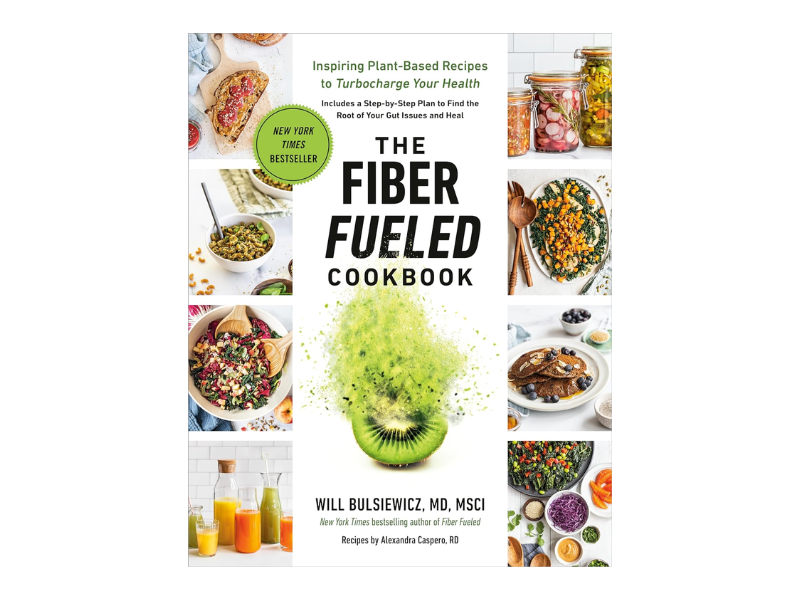
Fuel your gut with Dr. Will Bulsiewicz’s The Fiber Fueled Cookbook! Over 100 plant-based recipes plus the GROWTH strategy help you improve gut health, manage food sensitivities, and enjoy flavourful, fibre-rich meals.
Hydrate Intentionally: Fibre works best when it can absorb water and move smoothly through your digestive tract. As you increase your fibre intake, make a point of drinking more fluids throughout the day, especially water. This helps prevent constipation and supports the beneficial effects of fibre.
Meet the Two Fibre Types:
Soluble Fibre
Found in oats, beans, apples, and barley. It dissolves in water to create a gel that slows digestion, helping stabilize blood sugar, lower cholesterol, and keep you feeling fuller for longer.
Insoluble Fibre
Found in whole grains, vegetables, nuts, and seeds. It doesn’t dissolve but adds bulk, helping food move smoothly through your digestive system for regularity.
The magic happens when you combine them. A bowl of oatmeal (soluble) topped with berries and nuts (insoluble) gives you both types working together, one feeding your gut bacteria and managing blood sugar, the other keeping things moving efficiently.
When to Consider Supplements
Fibre supplements can be helpful for filling small gaps, but they work best as part of a food-first approach:
Prioritize whole foods: Whole foods are better for you than fibre supplements. Fibre supplements don’t provide the variety of fibre, vitamins, minerals, and other beneficial nutrients that whole foods do.
Start small and increase gradually: A sudden boost in fibre can cause gas, bloating, and cramping. Mayo Clinic recommends slowly adding fibre to your diet rather than making a big jump all at once.
Stay hydrated: Always drink plenty of water when increasing fibre intake, since fluid helps fibre move smoothly through your digestive system.
Spread your intake throughout the day: It’s easier on your gut if you get fibre from different meals and snacks, instead of loading up all at once.

RestoraFIBRE Daily Fibre Gummies provide a convenient, tasty way to support digestive health and promote regularity. Each serving delivers 8 grams of naturally sourced inulin prebiotic fibre with less than 1 gram of sugar, in six delicious fruit flavours, perfect for helping meet your daily fibre needs.
What Successful Fibremaxxing Actually Feels Like
Forget the dramatic before-and-after posts. Real fibre success is more subtle but more sustainable:
Comfortable Digestion
Regular bowel movements without strain for everyday comfort.
Satiety
Feeling satisfied after meals for longer periods, naturally supporting healthy eating.
Stable Energy
Consistent energy levels throughout the day without afternoon crashes.
Gentle Digestion
Improved digestion without bloating or discomfort.
Bloating or gas: Increase fibre gradually and drink plenty of water.
Constipation: Fibre without enough water can worsen symptoms.
Ongoing discomfort: Reduce to your previous intake and increase more slowly; consult a healthcare provider if needed.
The Bottom Line: It’s About Progress, Not Perfection
The fibremaxxing trend has inspired countless people to think more seriously about their gut health, and that’s wonderful. The science supports eating more fibre, and the benefits are real.
The key is approaching it as a gradual lifestyle shift rather than as a dramatic challenge. Your digestive system is remarkably adaptable when given time to adjust. Most people who experience initial discomfort find that a slower approach gets them to their fibre goals with much greater comfort and success.
Whether you’re just starting or recalibrating after some early bumps, remember that sustainable change happens in weeks and months, not days. Your gut, and your future self, will appreciate the patient approach.
~ Read more from The Health Insider ~
- Health Canada Authorizes TNKase for Treatment of Adult StrokeHealth Canada officially authorizes TNKase for treating acute ischemic stroke in adults. This pivotal approval introduces a faster, 5-second injection to emergency rooms nationwide.
- Generic Ozempic: Canada to See Significant Price DropsStruggling with high medication costs? Generic Ozempic is coming to Canada in 2026. Learn how prices could drop from $400 to around $100.
- Affordable Dental Care is Here. This is where to find it.Don’t let cost stop you! THI breaks down the Canadian Dental Care Plan (CDCP) and shows you where to find discounted, supervised care near you.
- Wegovy Authorized as Canada’s First Liver Disease DrugNo more “watchful waiting.” Health Canada’s approval of Wegovy gives MASH patients their first tangible medical option to fight liver fibrosis.
- The Affordable Superfood Canadians OverlookPacked with protein, fibre and key nutrients, beans are a budget-friendly way to boost health and support local farmers.
- Canada Authorizes First-Ever Oral Treatment for Postpartum DepressionCanada approves ZURZUVAE, the first oral PPD pill. This breakthrough 14-day oral therapy aims to elevate the standard of maternal mental health care.
The information provided on TheHealthInsider.ca is for educational purposes only and does not substitute for professional medical advice. TheHealthInsider.ca advises consulting a medical professional or healthcare provider when seeking medical advice, diagnoses, or treatment. To read about our editorial review process click here.

